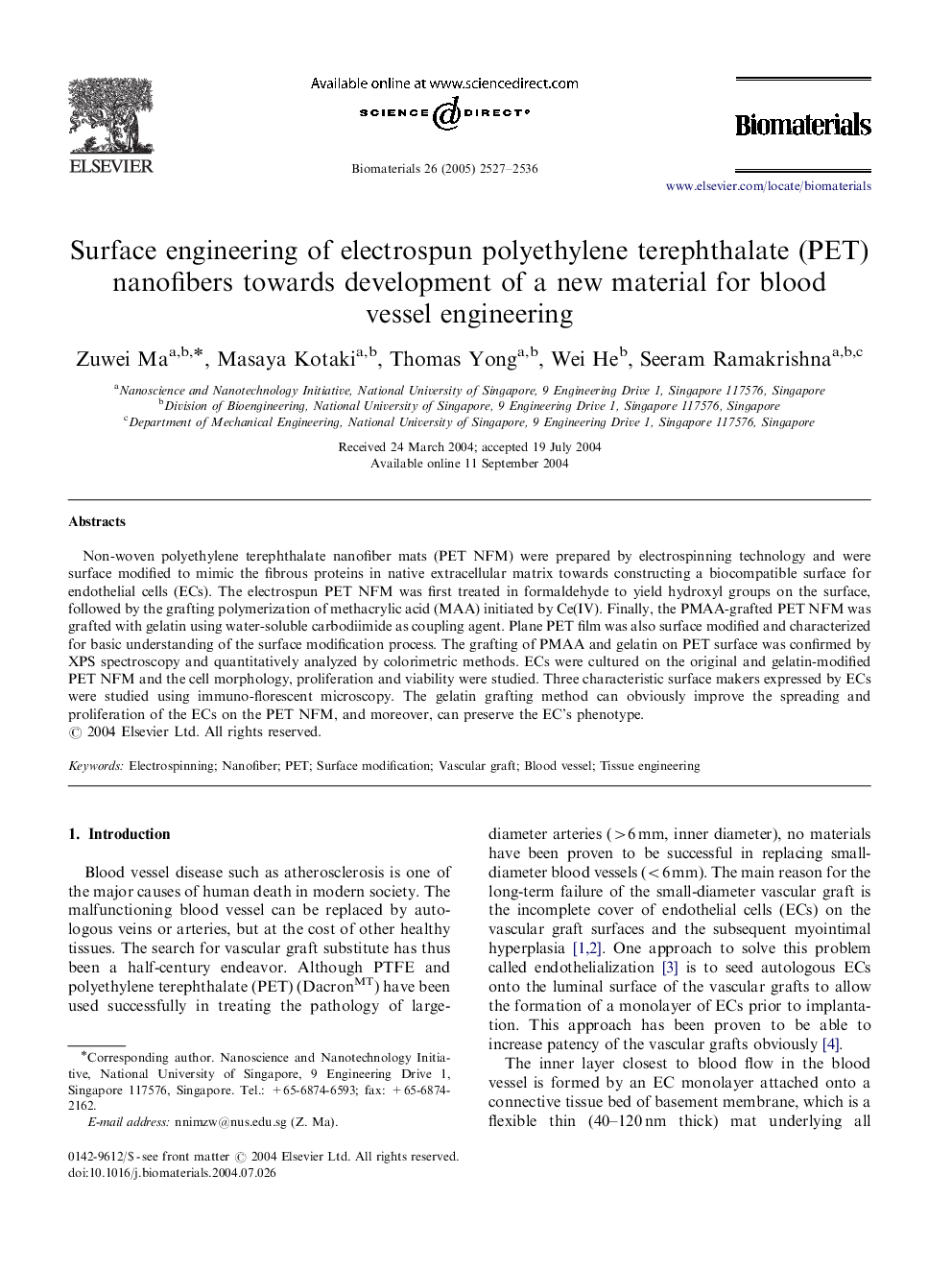| Article ID | Journal | Published Year | Pages | File Type |
|---|---|---|---|---|
| 12819 | Biomaterials | 2005 | 10 Pages |
sNon-woven polyethylene terephthalate nanofiber mats (PET NFM) were prepared by electrospinning technology and were surface modified to mimic the fibrous proteins in native extracellular matrix towards constructing a biocompatible surface for endothelial cells (ECs). The electrospun PET NFM was first treated in formaldehyde to yield hydroxyl groups on the surface, followed by the grafting polymerization of methacrylic acid (MAA) initiated by Ce(IV). Finally, the PMAA-grafted PET NFM was grafted with gelatin using water-soluble carbodiimide as coupling agent. Plane PET film was also surface modified and characterized for basic understanding of the surface modification process. The grafting of PMAA and gelatin on PET surface was confirmed by XPS spectroscopy and quantitatively analyzed by colorimetric methods. ECs were cultured on the original and gelatin-modified PET NFM and the cell morphology, proliferation and viability were studied. Three characteristic surface makers expressed by ECs were studied using immuno-florescent microscopy. The gelatin grafting method can obviously improve the spreading and proliferation of the ECs on the PET NFM, and moreover, can preserve the EC's phenotype.
